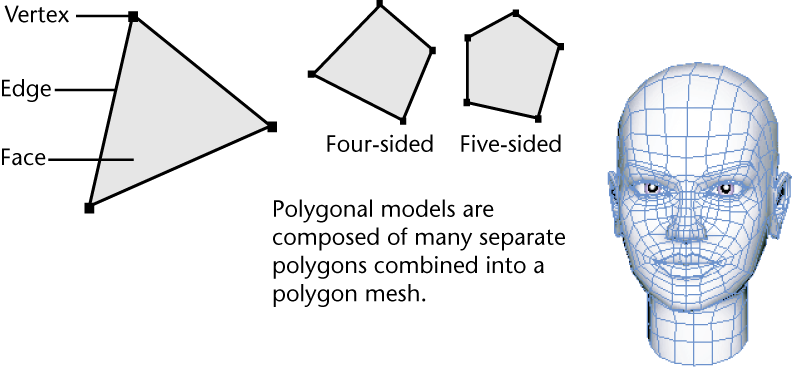Polygons consist of geometry based on vertices, edges, and faces that you can use to create three-dimensional models in Maya.
Polygons are useful for constructing many types of 3D models and are widely used in the development of 3D content for animated effects in film, interactive video games, and the internet.
Polygon terminology
Polygons are straight-sided shapes (3 or more sides), defined by three-dimensional points (vertices) and the straight lines that connect them (edges). The interior region of the polygon is called the face. Vertices, edges, and faces are the basic components of polygons. You select and modify polygons using these basic components.
When you model with polygons you usually use three-sided polygons called triangles or four-sided polygons called quadrilaterals (quads). Maya also supports the creation of polygons with more than four sides (n-gons) but they are not as commonly used for modeling.
An individual polygon is commonly called a face, and is defined as the area bounded by three or more vertices and their associated edges. When many faces are connected together they create a network of faces called a polygon mesh (also referred to as a polyset or a polygonal object). You create your 3D polygonal models using polygon meshes. Polygon meshes can be created using a variety of techniques. For more information on these techniques see Polygon modeling overview.

Polygon meshes normally share the vertices and edges that are common between the individual faces. These are referred to as shared vertices or shared edges.
A polygon mesh can also be composed of several disjointed sets of connected polygons called shells. The outside edges of a mesh or shell are referred to as border edges.
Texture mapping polygonal models
Polygon models are texture mapped using UV texture coordinates. For more information on texturing polygonal models see Mapping UVs.